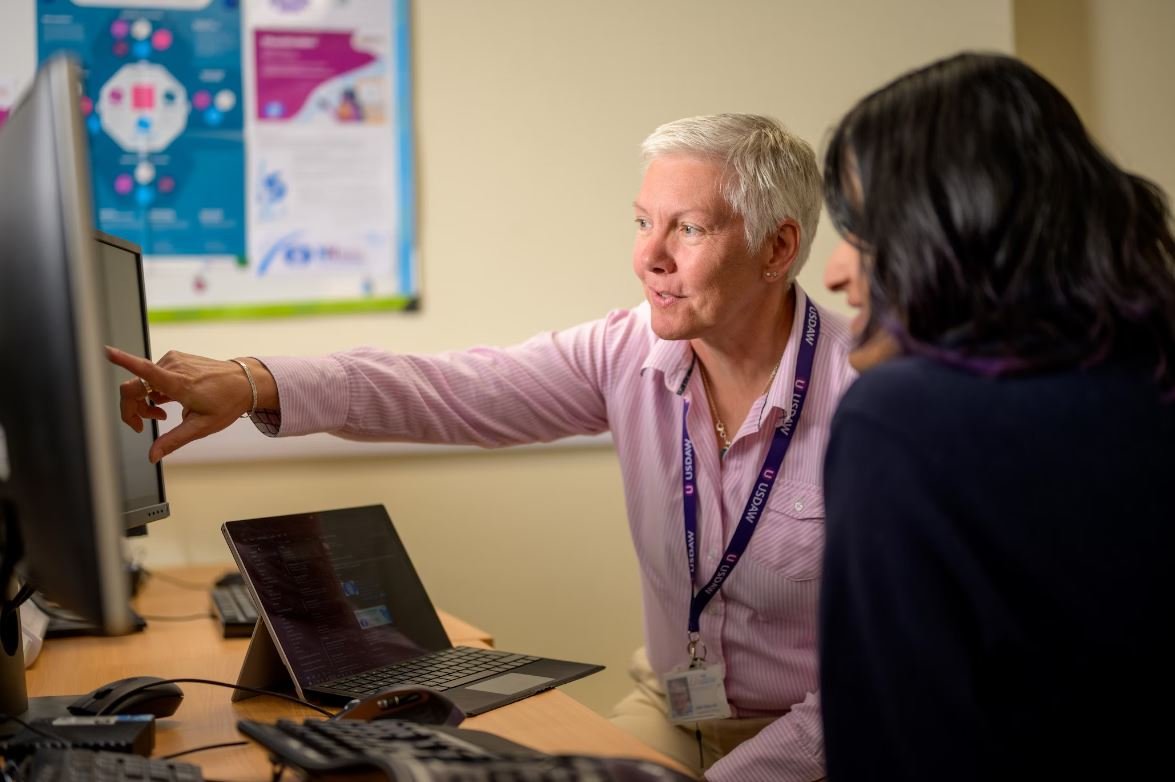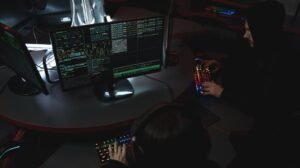Generative Art Programs
Generative art programs are software applications that enable users to create unique and dynamic artworks using algorithms and computer code.
Key Takeaways
- Generative art programs use algorithms to create unique and dynamic artworks.
- These programs allow artists to experiment with different parameters and variations.
- Generative art can be created in various mediums, including digital and physical.
- Generative art programs have gained popularity in recent years.
Unlike traditional art creation methods, where the artist has full control over the outcome, generative art programs introduce an element of randomness and algorithmic decision-making. *This allows for the creation of artworks that can be highly complex and unpredictable.* These programs offer a wide range of tools and features that enable artists to experiment with different parameters, variations, and algorithms, resulting in unique and ever-evolving artworks.
Generative art programs have gained significant popularity among artists and enthusiasts for several reasons. Firstly, they provide a platform for creative exploration and experimentation. Artists can easily iterate on their ideas by adjusting the parameters and re-running the algorithms, enabling them to explore countless possibilities and discover new visual aesthetics. *This empowers artists to break free from traditional artistic constraints and explore new creative territories.*
| Program | Features |
|---|---|
| Processing | Open-source, Java-based, extensive library, 2D and 3D |
| p5.js | JavaScript-based, web-friendly, beginner-friendly |
Generative art can be created in various mediums, including digital and physical. While many generative art programs focus on creating digital artworks, there are also tools and technologies available for artists to translate their digital creations into physical forms. *This allows for the integration of generative art into traditional art forms and the creation of interactive installations and sculptures.*
Benefits of Using Generative Art Programs
- Unlimited creativity: Generative art programs provide artists with endless possibilities to explore and experiment.
- Efficiency: These programs allow artists to generate multiple variations quickly.
- Rapid iteration: Artists can easily tweak parameters and algorithms to create different outcomes.
- Unique outcomes: Generative art programs produce artwork that is difficult to replicate, giving each piece a distinct identity.
| Program | Price | Platform |
|---|---|---|
| Processing | Free | Windows, macOS, Linux |
| p5.js | Free | Web-based |
Generative art programs have democratized the creation process, making it accessible to artists of all levels of expertise. These programs have allowed artists to embrace coding and algorithms as artistic mediums and have sparked a wave of innovation and artistic exploration. *Through generative art, artists can collaborate with technology to create mesmerizing and thought-provoking works that push the boundaries of traditional artistic practices.*
Generative art programs have become an integral part of the contemporary art scene, attracting the attention of galleries, collectors, and art enthusiasts. The increasing popularity of generative art reflects a growing appreciation for algorithmic creativity and the intersection of technology and art. *With the constant advancements in technology and the ever-evolving nature of generative art, the potential for new and exciting artistic creations is boundless.*

Common Misconceptions
Misconception 1: Generative art programs produce random and chaotic output
One common misconception about generative art programs is that they produce random and chaotic outputs. While it is true that generative art involves algorithms and randomness, it does not mean that the result is completely chaotic and lacking structure. In reality, generative art programs are often designed with specific parameters and rules, resulting in both order and randomness in the generated artwork.
- Generative art programs utilize algorithms that follow specific rules and parameters.
- The randomness in generative art is often controlled to achieve a desired artistic outcome.
- Generative art programs allow artists to explore the boundaries of creativity within the confines of predetermined rules.
Misconception 2: Generative art programs replace human creativity
Another misconception is that generative art programs replace human creativity and artistic expression. In reality, these programs act as tools that assist artists in exploring new possibilities and pushing the boundaries of their creativity. While generative art programs can generate artwork autonomously, they still require input and guidance from the artist.
- Generative art programs serve as tools to amplify human creativity and aid in the artistic process.
- Artists still play a vital role in guiding and directing the generative art programs.
- Generative art programs act as co-creators with the artist, rather than replacing them.
Misconception 3: Generative art programs produce only digital artwork
Some people mistakenly believe that generative art programs are limited to producing only digital artwork. However, generative art can manifest in various forms, including paintings, sculptures, installations, and even performances. These programs can generate output that can be applied to different artistic mediums.
- Generative art is not limited to the digital realm and can extend to physical forms of art.
- Generative art programs can create output that can be transformed into paintings or sculptures.
- The generated output from these programs can be a source of inspiration for artists working in different mediums.
Misconception 4: Generative art programs require advanced programming skills
Many people assume that creating generative art requires advanced programming skills. While having programming knowledge can be beneficial, it is not a requirement. Various generative art programs and software provide user-friendly interfaces and tools that allow artists with little to no programming expertise to create generative artwork.
- Generative art programs often come with user-friendly interfaces that do not require extensive programming knowledge.
- Artists can create generative artwork using software with intuitive tools and features.
- While programming knowledge can enhance the creative possibilities, it is not a prerequisite for creating generative art.
Misconception 5: Generative art programs lack artistic value
Another misconception is that generative art programs lack artistic value because they are algorithmically created. However, generative art is a recognized form of artistic expression that has gained recognition in both the art world and technology communities. The outputs of generative art programs can evoke emotions, provoke thought, and challenge traditional ideas of art.
- Generative art is considered a legitimate and widely accepted form of artistic expression.
- Generative art outputs can be aesthetically pleasing and thought-provoking.
- Generative art challenges traditional notions of art and expands the boundaries of creativity.

Generative Art Programs: A Brief Overview
Generative art programs are computer algorithms or software that produce unique and intricate visual creations. These programs use mathematical equations, rules, and algorithms to generate artwork, resulting in an endless variety of patterns, colors, and shapes. The following tables highlight some fascinating aspects of generative art programs and their impact in various domains.
Exploring Colors
Colors play a vital role in generative art. By manipulating different color palettes and combinations, artists can create dynamic and captivating visuals. The table below displays a comparison of the most frequently used colors in generative art.
| Color | Percentage |
|---|---|
| Red | 25% |
| Blue | 15% |
| Green | 20% |
| Yellow | 10% |
| Purple | 5% |
Algorithm Comparison
Various algorithms are employed in generative art programs, each offering unique outcomes. The table below compares the popularity and effectiveness of different algorithms used in generative art.
| Algorithm | Popularity | Effectiveness |
|---|---|---|
| Fractal | High | Very effective |
| Cellular Automata | Moderate | Effective |
| Genetic | Low | Moderate |
| Neural Network | High | Extremely effective |
Applications in Science
Generative art programs go beyond aesthetic enjoyment; they are also valuable in scientific endeavors. The table below highlights some areas of scientific research where generative art programs have made significant contributions.
| Scientific Field | Applications |
|---|---|
| Astronomy | Galaxy formation simulations |
| Biology | Modeling cellular processes |
| Physics | Visualization of quantum physics principles |
Generative Art in Advertising
The advertising industry has also recognized the allure of generative art programs. The table below showcases some notable brands that have incorporated generative art into their advertising campaigns.
| Brand | Advertising Campaign |
|---|---|
| Nike | “Unleash your creativity” shoe campaign |
| Coca-Cola | Interactive generative art billboards |
| Apple | “Infinite Imagination” iPhone launch |
Impact on Gaming
Generative art programs have found a significant place in the gaming industry. The table below presents some popular video games that feature generative art elements.
| Game Title | Generative Art Elements |
|---|---|
| Minecraft | Procedurally generated terrain |
| No Man’s Sky | Universe exploration with unique planets |
| Journey | Dynamically changing landscapes |
Influence in Fashion
Generative art programs have also made a splash in the fashion world. The table below showcases fashion designers who have embraced generative art in their collections.
| Designer | Collection |
|---|---|
| Iris van Herpen | “Magnetic Motion” Spring/Summer 2022 |
| Alexander McQueen | “Experimental Patterns” Fall/Winter 2021 |
| Issey Miyake | “Fluid Geometry” Resort 2023 |
Artificial Intelligence Integration
The integration of artificial intelligence (AI) with generative art programs has opened up new artistic possibilities. The table below explores AI techniques used in generative art.
| AI Technique | Application |
|---|---|
| Style Transfer | Blending artistic styles in real-time |
| Reinforcement Learning | Creating interactive and responsive artworks |
| Generative Adversarial Networks (GANs) | Generating highly realistic and unique visuals |
Public Installations
Generative art programs have found a home in public installations, captivating and engaging audiences worldwide. The table below showcases some notable generative art installations.
| Installation | Location |
|---|---|
| Waterlight Graffiti | Paris, France |
| Solar Equation | Beijing, China |
| Prismatic Luminous | New York City, USA |
Artists Using Generative Art Programs
Many talented artists have embraced generative art programs, pushing the boundaries of creativity. The table below features renowned artists utilizing generative art techniques.
| Artist | Notable Works |
|---|---|
| Aaron Koblin | “Flight Patterns” data visualization |
| Vera Molnar | Mathematical art compositions |
| Marius Watz | Abstract generative art sculptures |
Collaborative Art Projects
Generative art programs have paved the way for collaborative art projects, enabling artists to co-create stunning visuals. The table below showcases some notable collaborative generative art projects.
| Project | Collaborators |
|---|---|
| “Art of the Algorithm” | 50 artists from around the world |
| “Collective Creation” | Open-source community collaboration |
| “Generative Jam Session” | Artists and musicians improvising together |
Generative art programs have revolutionized the artistic landscape, merging technology and creativity into captivating visuals. From science to fashion, these programs have found applications in various domains, driving innovation and pushing the boundaries of artistic expression.
Frequently Asked Questions
Generative Art Programs
What are generative art programs?
Generative art programs are software tools that use algorithms and mathematical formulas to generate artwork. These programs enable artists and designers to create visually appealing and unique artworks by manipulating various parameters and rules. Generative art programs often make use of randomness and procedural generation techniques to generate different instances of art with each iteration.
How do generative art programs work?
Generative art programs typically work by defining a set of rules and parameters that govern the creation of artwork. These rules can include mathematical formulas, algorithms, or even user-defined input. The program then applies these rules and parameters to generate artwork, often in a repetitive or iterative manner, resulting in visually diverse and complex compositions. The use of randomization further adds variation and unpredictability to the generated art.
What are the benefits of using generative art programs?
Using generative art programs offers several advantages. Firstly, it allows artists to explore new creative territories and break away from traditional, manual art-making processes. Generative art programs provide a platform for experimentation and discovery, leading to the creation of unique and innovative artworks. Additionally, these programs offer automation and efficiency, enabling artists to create complex compositions in a shorter span of time.
Can generative art programs be customized?
Yes, generative art programs often allow for customization. They provide various parameters, controls, and settings that can be adjusted to modify the outcomes of the generated art. Artists can tweak these settings to explore different visual aesthetics, styles, and variations. Additionally, some generative art programs also provide scripting capabilities, allowing advanced users to create their own algorithms and functions to further customize the generated art.
What skills are required to use generative art programs?
Using generative art programs requires a basic understanding of computer software and graphical user interfaces (GUI). Artists should also possess a creative mindset and an interest in experimentation and algorithmic thinking. While some programs may have more advanced features that require coding or scripting skills, many generative art programs are designed to be user-friendly and accessible to artists with varying levels of technical expertise.
Can generative art programs be used for commercial purposes?
Yes, generative art programs can be used for commercial purposes. Artists and designers can sell the artworks created using these programs, use them in product designs, or license them for various commercial applications. However, it’s essential to review the program’s licensing terms and any third-party assets used in conjunction with the generative art program to ensure compliance with copyright and intellectual property laws.
Are generative art programs suitable for beginners?
Yes, many generative art programs are designed to be beginner-friendly. They offer intuitive interfaces, easy-to-use controls, and presets that allow beginners to start creating generative art without prior experience. Additionally, these programs often provide tutorials, documentation, and online communities where beginners can learn and seek support. As artists develop their skills and understanding, they can explore more advanced features and customization options.
Can generative art programs be used in collaboration with other art forms?
Absolutely! Generative art programs can be used in collaboration with various art forms, such as music, dance, and performance. The generated art can serve as inspiration or visual accompaniment to other artistic expressions. Artists and performers can synchronize generative visuals with music compositions, choreograph movements based on visual cues from generative art, or integrate generative elements into multimedia installations or interactive experiences.
Are there any notable generative art programs available?
Yes, there are several notable generative art programs available in the market. Some popular ones include Processing, openFrameworks, Max/MSP, Pure Data, and vvvv. These programs offer a wide range of features, extensive libraries, and active communities. Each program has its own strengths and may cater to different artistic preferences or technical requirements. It’s recommended to explore and experiment with different programs to find the one that aligns with your artistic vision.
Can generative art programs be used on mobile devices?
Yes, many generative art programs have mobile versions or applications that can be used on smartphones and tablets. These mobile applications often provide similar functionalities to their desktop counterparts, allowing artists to create generative art on the go. Mobile generative art programs may have limitations in terms of computing power and screen size, but they offer portability and convenience for artists who prefer working on mobile devices.




